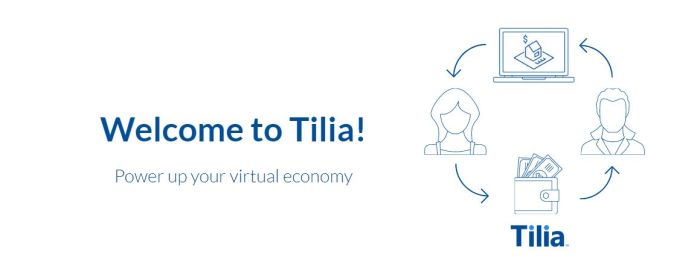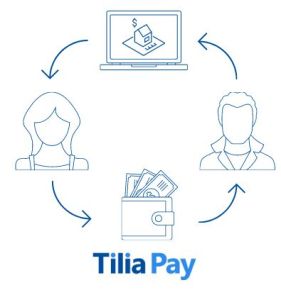
It has been announced that Tilia.io, the all-in-one payments platform established by Linden Lab in 2019 and which manages payment processing and cashing out for Second Life (as well as supporting a number of other platforms and virtual environments), is to be acquired by Singapore-based business-2-business (B2B) payments infrastructure firm Thunes.
The acquisition of Tilia will be for an undisclosed sum, and follows an agreement being reached between Thunes and Tilia majority owner Linden Research (the formal name of Linden Lab). However, it is still currently awaiting regulatory approval, so has not – as of the time of writing – being finalised.
News of the acquisition was made public via a press release widely circulated by Thunes on Tuesday, April 23rd, 2024 (see links below for some of the reporting on the announcement), and has sparked comments, discussions and questions on a number of Second Life related forums.
Who Are Thunes?
Thunes is regarded as a start-up company, although it has been operating for some eight years. As a B2B payments company, Thunes powers payments for major brands such as Uber and Deliveroo, and also to global Fintech companies such as PayPal and Remitly.
They boast that with a single connection, businesses and their customers can both send payments to, and receive payments from 133 countries around the world, with support for 84 currencies and some 550 alternative payment methods (ATMs), including 129 recognised mobile wallets. Whilst headquartered in Singapore, the company has regional offices in London where communications on the deal with Linden Lab are being handled), Paris, Shanghai, New York, Dubai, and Nairobi. In addition to providing a B2B payments infrastructure direct to businesses across the world, Thunes also provides payment services to the banking industry, a service it is aggressively growing in order to more fully compete with SWIFT, the world’s dominant international financial network.
In December 2023 Thunes achieved a market valuation of some $900 million, with its series C funding round bringing the company some US $202 million investment – including from the likes of Visa, the global payment giant, Singaporean government investment vehicle EDBI, and US-based Endeavor Catalyst.
Why Would They be Interested In Tilia†?
Tilia is particularly attractive to Thunes as it is already a fully licensed Money Service Business (MSB) across 48 US states and territories, thus allowing Thunes to readily extend its services to business owners and customers across the United States – including Tilia’s current customer base, which obviously includes Second Life, as well as VRChat, Upland, Avatus and Unity. In addition, through brand recognition within the content creation market and its expertise in managing token-based virtual economies such as the Linden Dollar, Tilia provides Thunes with a ready-made means of expanding its presence in these markets both in the United States and globally.
What Does This Mean for Second Life‡?
This is perhaps harder to quantify from the side-lines. However, there are some points which may be worthy of note:
- Following regulatory approval, Tilia will be re-branded Thunes, but will continue to be based in San Francisco.
- The agreement is subject to an exclusive 5-year collaboration, Thunes will provide payment processing and payouts to Linden Lab across Thunes’ global network.
- This should allow Second Life users and creators to enjoy more options for buying Linden Dollars and for cashing-out “in a more cost-efficient manner and with increased transparency”, with the Lab adding via a comment on a Reddit thread, “without additional costs”.
- In support of the above, the Thunes press release includes the following statement from Brad Oberwager, Linden Lab’s co-owner and Executive Chairman:
Thunes is an exceptional company that directly connects nearly every payment method and market worldwide. The combination of Tilia and Thunes will give Linden Lab’s customers more payment choices, and the ability to receive pay-outs in real-time, anywhere, into the wallet or bank account of their choice. It will be business as usual for our people and our customers as we bring Tilia and Thunes together.
I reached out to Linden Lab on hearing the news, and was informed that although the company has nothing further to add to the Thunes press release at this time, those from the company who will be attending the forthcoming Community Round Table (informally announced during the April 19th Lab Gab session, and featured in my summary of that event) will be prepared to discuss the acquisition. I’ll have a post on the Round Table as soon as all information relating to it (where, time, how to attend / watch) is publicly released.
With thanks to Coffee Pancake for the alert.
Related Links
- Thunes website
- Tilia website
- Thunes Press Release on Tilia Acquisition – April 23rd, 2024
- Press articles:
- Thunes acquires Tilia payments firm from Second Life owner Linden Research – VentureBeat
- Thunes to boost US footprint with acquisition of Tilia – Fintech Futures
- Thunes Tackles US Gaming Market With Tilia Acquisition – Paymnts.com
† Please note I am not an financial services expert, this section is therefore a subjective best guess.
‡ Again, please note this is a subjective best guess, even given the supporting quotes.
Note: updated to better reflect Tilia’s relationship with Second Life.










